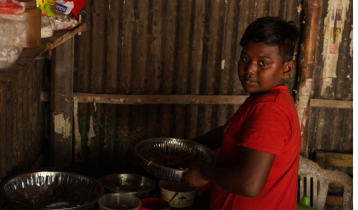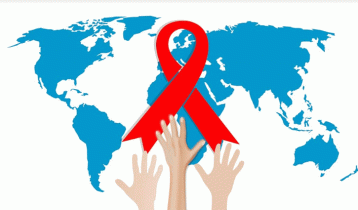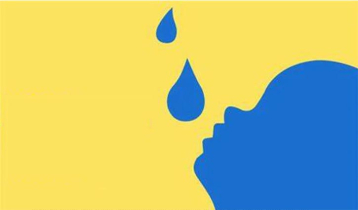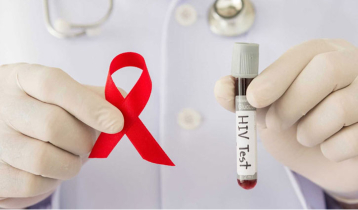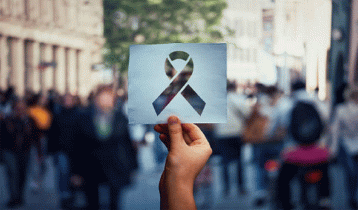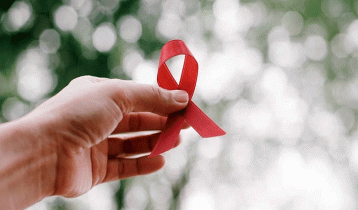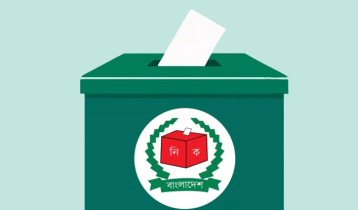The Journey of Death
Manzurul Alam Mukul || risingbd.com

Manzurul Alam Mukul: Over recent years, hundreds of thousands of Rohingya have left their homes in what has become the largest regional sea migration since the end of the Vietnam War. Some Bangladeshis are thought mainly to be economic migrants and desperate fortune-seekers are leaving the country to get better jobs in South East countries. Some also are becoming victims of human smugglers.
The ill-fated people are embarking on dangerous sea voyages to Malaysia and other countries, making the seas of South East and South Asia the world’s deadliest migrant crossing. They are being described as `floating coffins` and the boats are being called `the boats of death` and the smugglers `the agents of death.`
According to the International Organisation for Migration (IOM), an estimated 25,000 Southeast Asian migrants took to the seas in the first three months of 2015. But recent crackdowns on the people-smuggling trade in Thailand led to scores of migrants being abandoned by trafficking gangs in the Bay of Bengal and the Andaman Sea.
Over 3,500 migrants were either rescued or they swam to the shores of Indonesia, Malaysia and Thailand in recent weeks. It is believed about 2,500 people, destined for Thailand and Malaysia, are adrift at sea in Southeast Asia, with horrific tales emerging of passengers abandoned by abusive smugglers, horribly cramped conditions, starvation and death.
Authorities in Thailand and Malaysia have already found many mass graves, suspected to be of trafficked migrants in abandoned jungle camps, drawing international attention to the crisis.
Why people leave for new destinations
The Rohingyas - a distinct Muslim ethnic group who are effectively stateless - have been fleeing Myanmar for decades. According to history, Rohingyas are living there from more than 1,000 years ago.
Labeled by the U.N. one of the world`s most persecuted minorities, the Rohingya have for decades suffered from state-sanctioned discrimination in Buddhist-majority Myanmar.
Myanmar`s governments say they are not a genuine ethnic group but are actually Bengali migrants. Successive Myanmar governments have been introducing policies to repress the Rohingya since the 1970s.
Also on the boats are many economic migrants and desperate fortune-seekers from Bangladesh, who are leaving the country to get better jobs in South East countries. Some also are becoming victims of human smugglers.
How migrants are stranded at sea?
There is no exact figure how many people are now stranded in rickety boats at sea with dwindling supplies of food and water. It is believed about 2,500 people are adrift at sea in Southeast Asia.
According to sources, boats left Bangladesh and Myanmar up to two months ago for Malaysia, the main choice of destination for the most of travellers because it is predominantly Muslim country and short of unskilled labourers.
In the meantime, Thailand launched the crackdown after mass graves were discovered in its coastal jungles where traffickers held many migrants hostage for ransom. Due to crackdowns on the people-smuggling trade in Thailand, smugglers and the captains abandoned the boats in the Bay of Bengal and the Andaman Sea.
Indonesia, Malaysia and Thailand also stationed their navies at maritime borders to push boats packed with migrants away or execute a so-called `help-on` policy of giving the boats food and water and pointing them to other countries.
A migrant who was rescued said," After abandoned their boat by trafficking gang, the passengers, without training or guidance, attempted to reach ashore. But the boat was first turned back by the Indonesian navy towards Malaysian waters, later the Malaysian navy returned it back towards Indonesia".
"During staying nearly two months at sea, we had to face horrific situations. No food, no clean water, no bedding there. As food and water ran out, violent clashes broke out, leaving many dead. Many accompanies including children reportedly died during the voyage and from starvation", he said.
How victims reach Thailand, a heaven of traffickers
The Thai ransom business has become so lucrative that the traffickers have extended their operations into Myanmar and Bangladesh, where there is already a well-established network of labour brokers.
The discovery came after Thailand`s junta cracked down on human trafficking in Sadao district of Songkhla province, following accusations that officials have been complicit in the illegal trade. The area bordering Malaysia is notorious for its network of secret camps where smuggled migrants were held.
According to media reports, falling prey to traffickers, migrants sailing to Malaysia are sold at different destinations. It begins from the Bay of Bengal and ends at the Thai jungles. The victims say this last stop is the worst. If ransom is not paid, this is where their lives end.
Trafficking of Bangladeshis begins in Teknaf, Cox`s Bazar. Field agents from all over bring people and load them onto small engine boats. The agents get Tk 10,000 per head. Each small boat carries 10 to 15 people. The people are made to lie on the bottom of the boats and are covered with fishing nets. From the Teknaf coast they are taken to larger engine boats at sea. These wooden boats are a lot like fishing trawlers, and the traffickers call these `ships`. The small boat owners are paid money when they hand over the people to the bigger vessels.
In the same manner, Myanmar agents take Rohingyas in small boats from the Arakan coast to the bigger boats and sell them.
The bigger vessels carry 300 to 500 persons. These vessels do not start until they are full. They sometimes wait for even two months.
Sources said that during this long spell of time, the boats stay in Myanmar waters, having an "understanding" with the Myanmar navy. The Myanmar navy is also paid to allow the boats to stay.
There is no return from the big boats. This is like a prison. The people are all cramped together. They are given a little rice and chillis to eat. Even the drinking water is inadequate. If anyone is sick, they are thrown into the sea. About four or five armed guards keep watch on the boats. If anyone argues, the guards just shoot them and fling them into the sea.
Once the boat is filled, the journey begins. It takes seven days and seven nights to reach the Thai coast.
What happens in Thai camps: Once the boats reach international water near Thailand and the agents in Thailand arrange for the people to come ashore. The trafficked people are sold to Thai agents. The Thai agents also pay the big vessels per head. Then the trafficked people are mostly taken to the hilly or jungle areas along the Thai coast Songkhla`s Rattphum, Sotun, Renong and Phuket. The Reyong coast is also used by traffickers, but less. Pickup vans await in the roads of the coastal areas to take them to camps in Badam Besar jungle near the Malaysian border. They have also to walk many hours to reach camps.
A camp comprises more a less a roof made of thick polythene with makeshift wooden or bamboo walls. Sometimes it is just a polythene cover overhead. The same people are not always kept together in the camps. They often are to change camps. Women are kept is separate camps. Many people die of torture or starvation in these camps.
A man who was rescued from a Songkhla camp, said a meal in the camp comprises two handfuls of boiled rice and cucumber served on polythene. Sometimes they add a chilli. They are given water twice a day, amounting to a glassful. They cannot wash their hands, face or gargle. They use the toilet in a hole dug in the jungle, surrounded by plastic. They have to wipe themselves clean with lumps of soil. They are beaten up. At night screams are heard from the women`s camps.
On May 25, Malaysian Police found a total of 139 suspected migrant grave sites and 28 human-trafficking camps close to the Thai border in north Malaysia.
They are close to where trafficking camps and dozens of shallow graves were found earlier across the Thai border. It can be here mentioned that at least 26 bodies were exhumed from the mass grave in Thailand that was discovered earlier this month.
How the problem can be resolved?
The UN, US, European Union and rights bodies have urged regional governments to take swift action to save migrants as around many are still believed to be stranded in the sea in Southeast Asia.
Due to heavy international pressures, Indonesia, Malaysia and Thailand have agreed to provide temporary shelter to the migrants, but have said that they will be resettled within a year.
Thailand, Malaysia, and Indonesia need to agree to never again engage in pushbacks of people stuck at sea, find any remaining boats, bring the people on board to safe ports, and ensure that their rights are respected.
Myanmar has once again banked on its old trick to describe Rohingya Muslims as `Bengalis` to avoid responsibilities amid growing international pressure on it to rescue thousands of boatpeople trapped at sea.
But government officials and experts on migrant issues in Dhaka termed it a `ploy` to push Rohingyas into Bangladesh. Myanmar does not recognise the Rohingya population as its citizens. Taking advantage of the situation, the Myanmar authorities are labelling the rescued as Bangalees.
Human rights experts opine the problem can be resolved if the international community puts pressure on Myanmar to improve the lives of the Rohingya community. Because ultimately it is only Myanmar can solve the problem. There will be no long-term solution unless Myanmar ends its rights-abusing and discriminatory policies toward the Rohingya and joins other countries including Bangladesh in taking action against smugglers and traffickers who abuse and prey on them.
risingbd/DHAKA/May 30, 2015
risingbd.com


